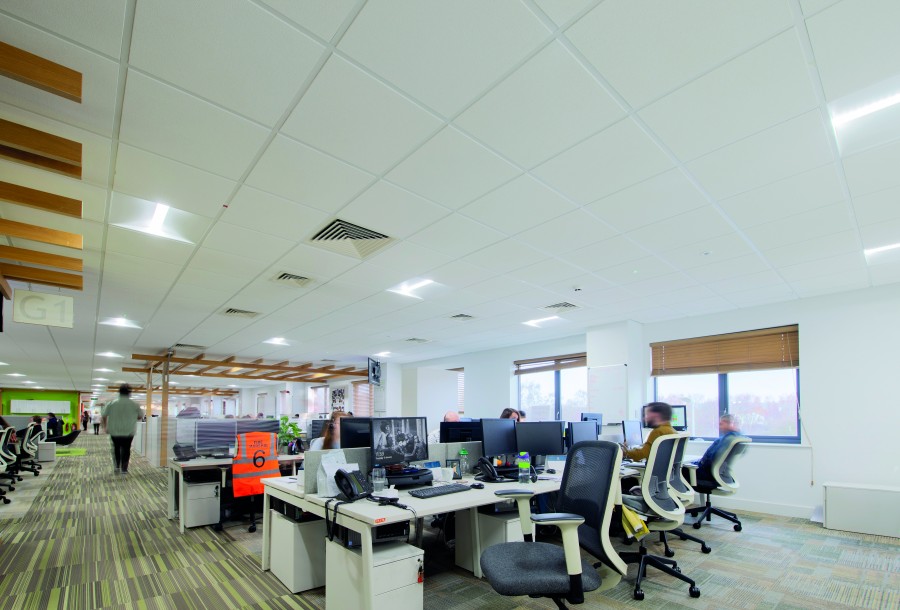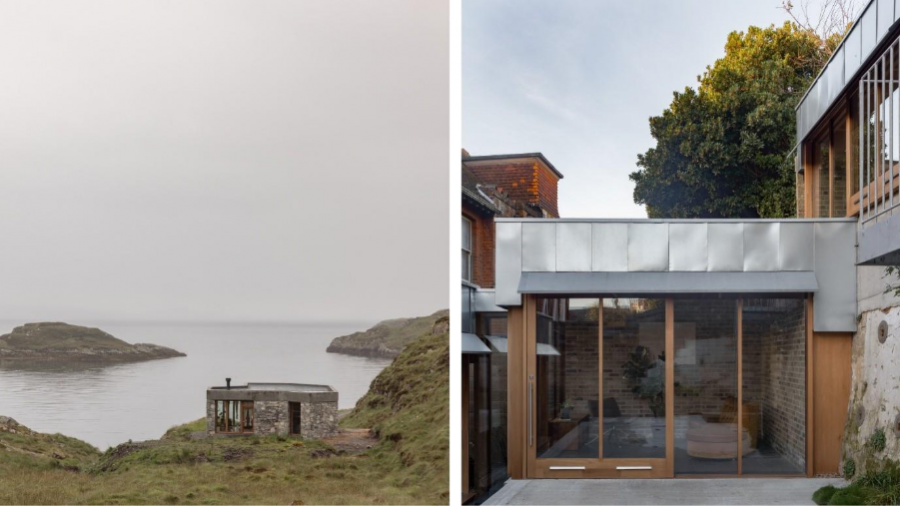As the drive towards reducing carbon emissions and improving energy efficiency continues across the built environment, the public sector will play a key role in achieving this. Debbie-Sue Farrell, Head of wellbeing and Marketing Manager at Tamlite Lighting says small changes can make a big difference.
Data released by the Department for Business, Energy and Industrial Strategy (BEIS) at the beginning of April showed that greenhouse gas emissions in Britain rose by 4.7% in 2021 compared with 2020 levels1. But it’s not all doom and gloom. Compared to 2019, the most recent pre-pandemic year, total greenhouse gas emissions are down 5.2% and are 47.3% lower than they were in 1990.
With the UK government setting a legally binding goal to achieve net zero by 2050, it remains clear that urgent actions still need to be taken for emission rates to decline at a far quicker rate. Indeed, this was the warning from the Intergovernmental Panel on Climate Change (IPCC) who said that without immediate and deep emissions reductions across all sectors, limiting global warming to 1.5°C is beyond reach2.

Commenting on the findings in the third volume of its latest climate assessment report, IPCC Chair Hoesung Lee commented “The decisions we make now can secure a liveable future. There are policies, regulations and market instruments that are proving effective. If these are scaled up and applied more widely and equitably, they can support deep emissions reductions and stimulate innovation.”
Here in the UK, 2050 may seem a long way off. But with just eight years to go to reach the Government’s commitment to reduce emissions by 68% by 20303, the price of inaction is bought into sharp focus!
Cutting carbon
The built environment remains a major contributor to climate change and is directly responsible for 25% of the total UK carbon footprint4, and therefore has a critical role to play in the national transition to net zero.
The public estate - Britain’s largest property portfolio - generates 2% of the UK's total carbon emissions. That figure might not seem much, but in 2020, net territorial greenhouse gas emissions in the UK were estimated to be 405.5 million tonnes, so the public estate is generating over 8 tonnes on its own! Whilst innovative low carbon technologies are often seen as the silver bullet, there are far simpler, and more cost-effective measures that can be taken. And it is arguable that the public sector must prioritise retrofitting its existing assets in order to meet carbon cutting targets as well as improve their energy efficiency, especially when you consider 80% of the buildings that will exist in 2050 already exist5.
Civic leaders from across Europe recognise the benefit of retrofitting solutions, with members of the C40 Cities initiative now calling on governments to scale up solutions in energy efficiency and retrofits to assist with wider decarbonisation targets6.
Smart lighting solutions
Lighting remains one of the most fundamental building services, yet it is here that small changes can make a big difference. The ability of LED technology to reduce energy consumption by two-thirds or more, as well as greatly increase product lifespans, is universally accepted. However, what is less understood are the actual savings that can be made and the overall ROI – in many cases, replacing outdated lighting with modern LED systems has generated savings of between 60% to 80%, and this should be seen as a key component of any decarbonisation plan.
As well as financial and environmental savings, in the vast majority of cases, high-efficiency LED lighting used in conjunction with intelligent control systems also add a level of flexibility that is vital across the public sector estate when you consider the varying use of properties.
As an example, installing PIR sensors ensures that lighting is not used unnecessarily when the room is unoccupied by dimming or switching off the fittings, while advanced controllers – such as daylight dimming sensors – allow the output of the luminaires to be adjusted in accordance with natural light levels.
Beyond that, a network which connects all fittings and sensors into a centralised control system allows building operators to establish lighting designs and settings that suit the preferences of different groups of occupants. Integrated systems like this also make it much easier to track energy usage and identify ways in which consumption can be further reduced.
The commissioning of intelligent lighting systems could be seen by many as a complex and time-consuming affair, but the latest generation of smart systems greatly reduces the impact on facilities’ cost-base, infrastructure and personnel. In this context it makes sense to engage with a specialist lighting company at the earliest possible stage, since they are able to provide expert guidance and the most effective fast-track solutions to delivering the right light when it is needed, and within budget.

Urban upgrades
It is not just indoor lighting where the public sector can make a difference in improving energy efficiency. The Energy Saving Trust reports if every street-lamp in the UK was upgraded to LED, it would save in the region of £77million7.
Poor lighting design not only results in energy waste but light spill and light intrusion, with the International Dark-Sky Association (IDA) estimating that 35% of artificial light is wasted by being poorly aimed or unshielded8.
One way to deal with unnecessary waste is to use luminaires with high optical control. A luminaire with high optical control will offer a better direction of light and will be more energy efficient (less light waste/spill). This is something that must be brought into consideration when specifying a lighting design and must be considered should the specification of the project change.
The nature of urban spaces may be subject to considerable variation, but it is vital for local authorities to invoke one universal design principle when delivering urban illumination: that lighting should be highly directional and provided only when and where it is needed. Combined with the warmer, more attractive nature of LED fixtures, such systems can ensure that lighting is radiated into the right space at the right time, reducing energy waste and carbon emissions.
Public sector organisations who lean towards lighting upgrades will not only reap the benefits from reducing their energy consumption but given the hugely increased energy costs, will also see a significant reduction when it comes to ROI. With the drive towards decarbonisation intensifying, retrofitting outdated lighting will without doubt be a vital step towards reducing environmental impact.
https://tamlite.co.uk/about-us/?utm_campaign=Light...
 \
\








 \
\












